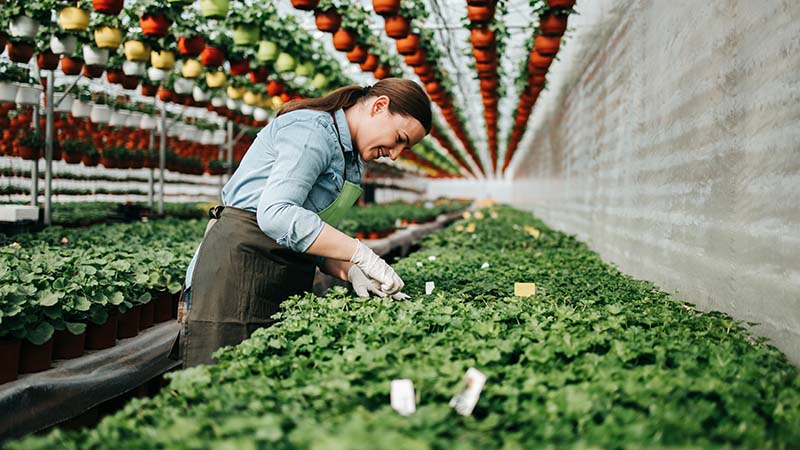Garden Retail Survey Says Consumers Are Buying Annuals And Edibles
 During the 2014 Greenhouse Grower GROW Summit, Susie Raker of C. Raker & Sons made a comment that hit home for everyone in the room. She said she was tired of trying to get more market share from a shrinking pie. She would much rather grow her business by having the industry expand.
During the 2014 Greenhouse Grower GROW Summit, Susie Raker of C. Raker & Sons made a comment that hit home for everyone in the room. She said she was tired of trying to get more market share from a shrinking pie. She would much rather grow her business by having the industry expand.
Susie gave voice to what just about everyone in the industry feels. It’s ridiculous to fight each other for market share when we should be focusing on fighting for our industry’s future. Simply put, we need more customers.
One way to expand our customer base is to follow the lead of those in charge: consumers. Ultimately, they control how much our industry grows or slims down.
To help make that happen, take a few minutes to look over the results of what we learned from retail surveys over the past few years. When retailers report what is selling and what isn’t, what they’re really reporting is what consumers want and don’t want.
Annuals Are Still King
In 2013 and 2014, we asked our readers what percentage of their gross sales were generated by 25 different product categories, which included everything from holiday decoration and gift items to plants. Retailers reported annuals generate almost a third of their gross sales. Perennials was a distant second at 13%.
In 2015, we changed how we asked about sales performance. We wanted to know which single category saw the highest increase in sales. This was a fill-in-the-blank type question. Annuals was by far the top category, garnering more than twice the write-ins of the next most-cited categories, which were perennials, trees, and edibles (these three were either tied or within one write-in citation of each other.)
Because much of the industry is built on annuals, this is very good news, indeed.
Edibles Are Making A Big Move
While annuals are still the dominant force among plant categories, edibles have had a remarkable surge. Throughout my career, I’ve surveyed garden retailers on how different plant categories perform. Until the past five years, retailers reported edibles made up only 1% to 2% of gross sales. And that was reflected in any plant yard you visited — herbs and vegetables were tucked to the side on no more than two or three benches.
As of 2014, edibles were generating 7% of the industry’s gross sales on average. Many individual stores report much higher percentages. Considering price points on these plants are very low, that’s an eye-opening percentage. Consultant Ian Baldwin works with the National Gardening Association [NGA] to analyze its annual National Gardening Survey. NGA asks consumers what they spend on a type of gardening overall, not just plants, and Baldwin pointed out that, beginning in 2013, consumers are spending more on vegetable gardening than flower gardening. That’s because there are so many other products that are tied in, such as fertilizers, raised beds, and so on.
Edibles had the highest increases in sale, by and large, and the lowest decreases and flat sales.
What This Means For Growers
Consumer trends matter. Talk to your biggest retail customers about programs that tap into how consumers are using annuals and edibles. There are many possibilities — decorating projects that include annuals (and even edibles), indoor kits for cooks, and black-thumb-proof herb kits are just a few that come to mind.
As an industry, we need to make our products appeal to consumers. If we can offer easy and fun ideas of how to use the products they are showing the most interest in, we’ll have a secure future.










